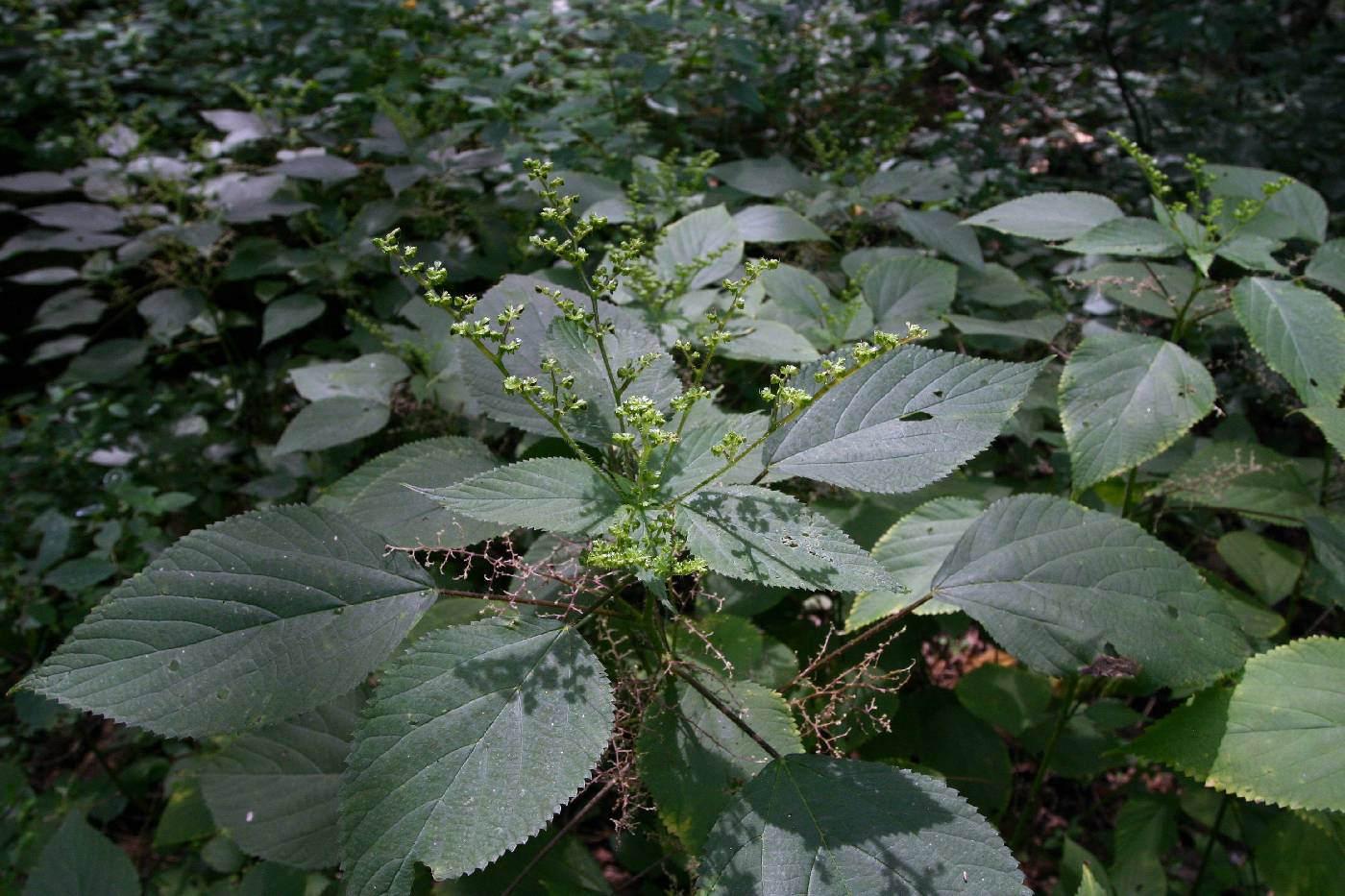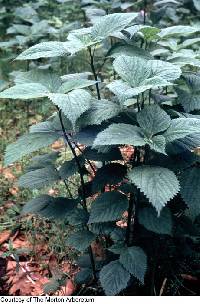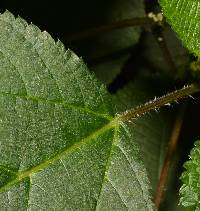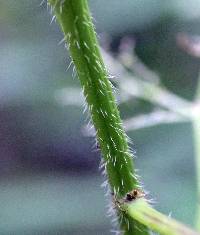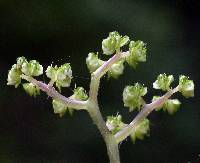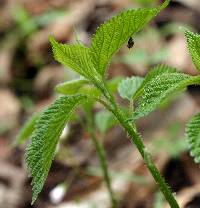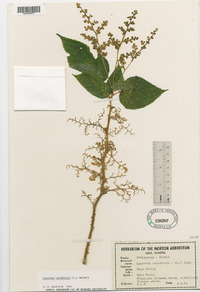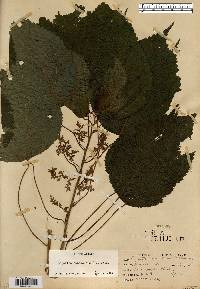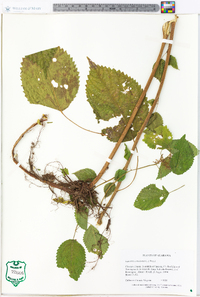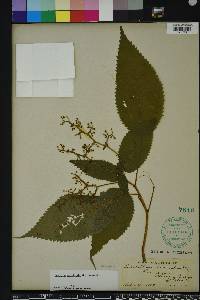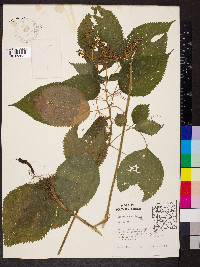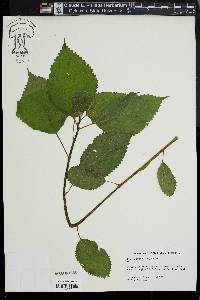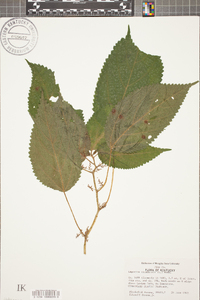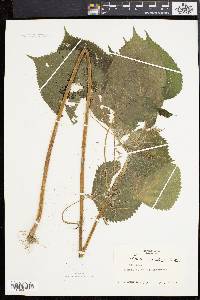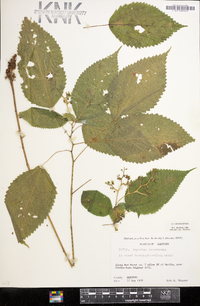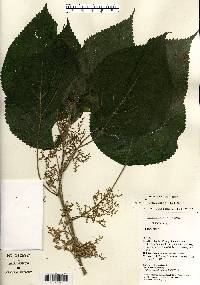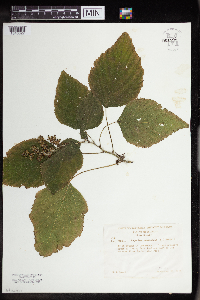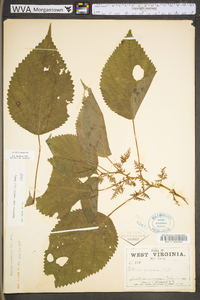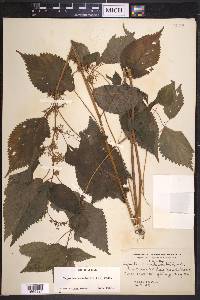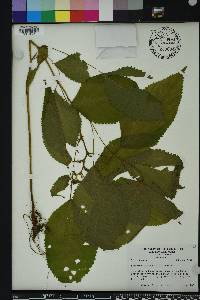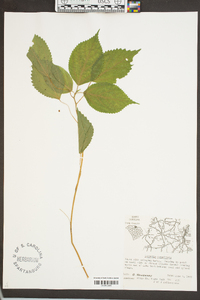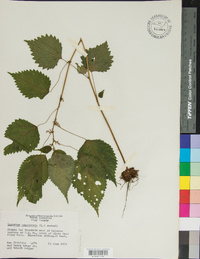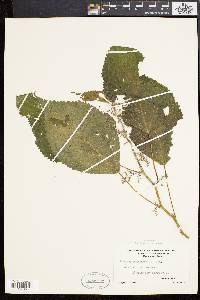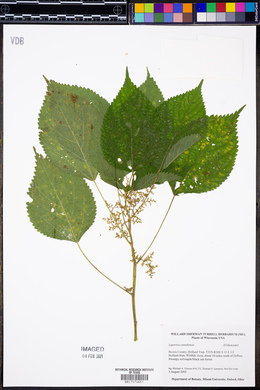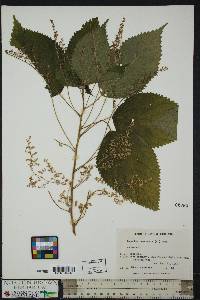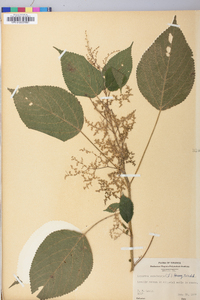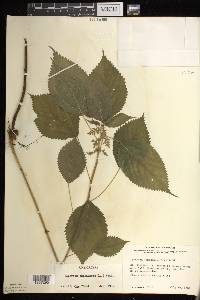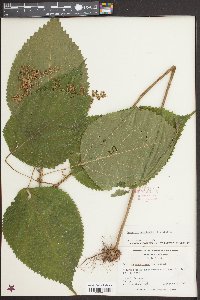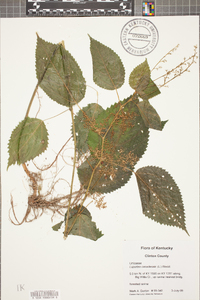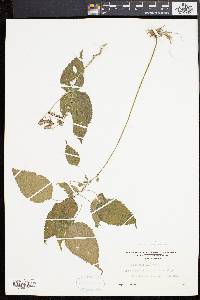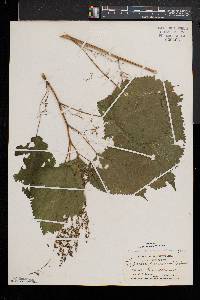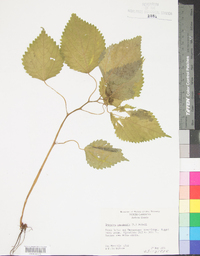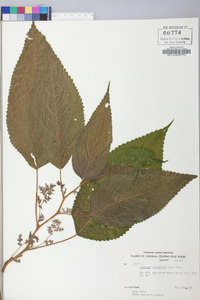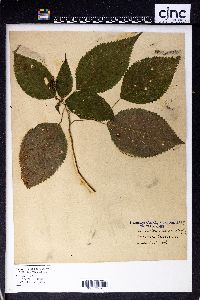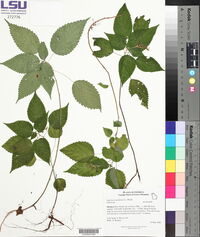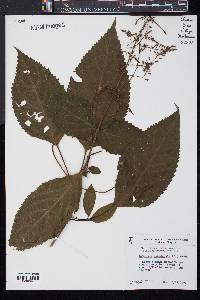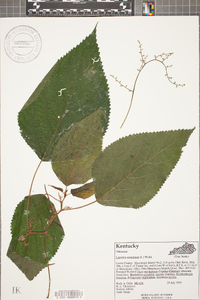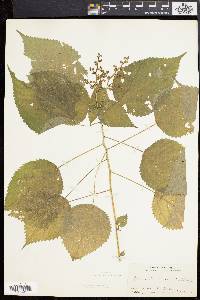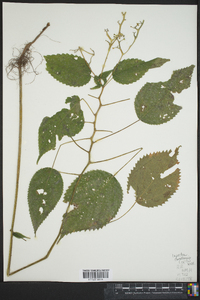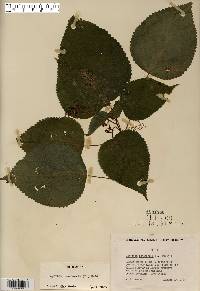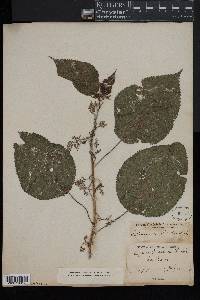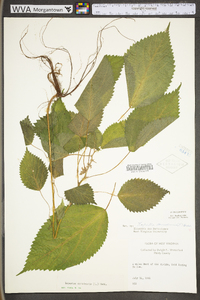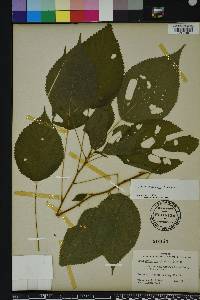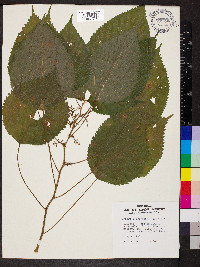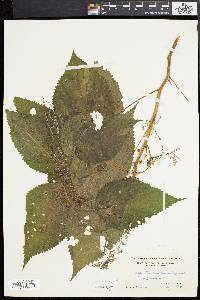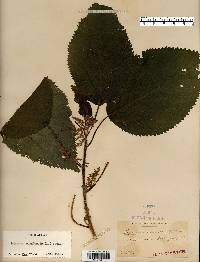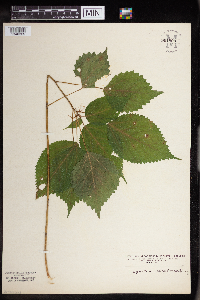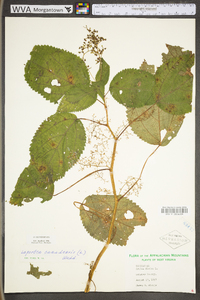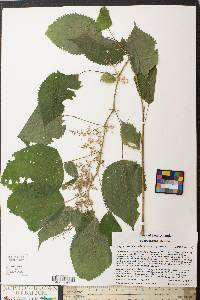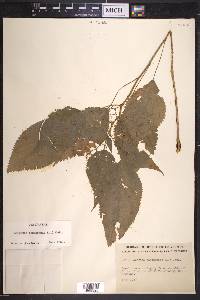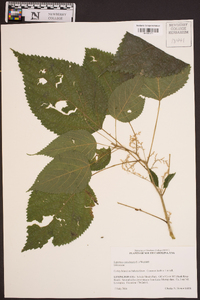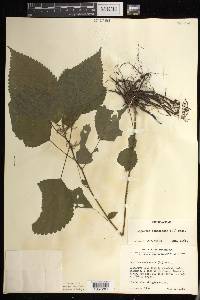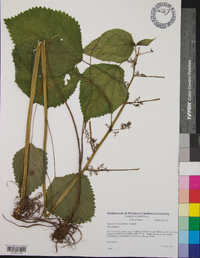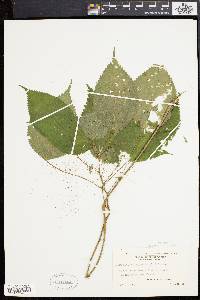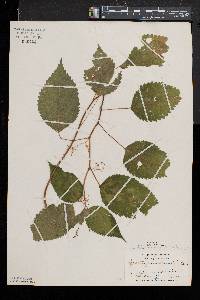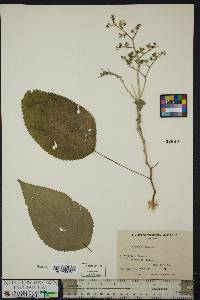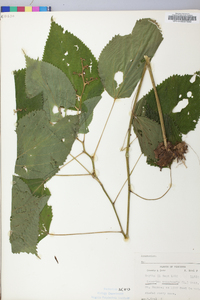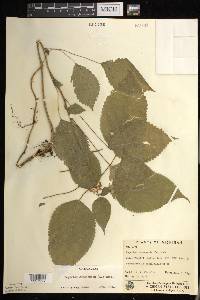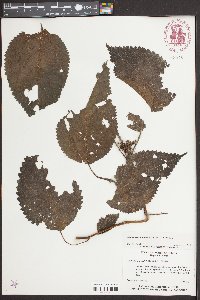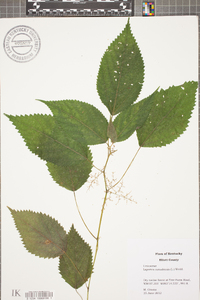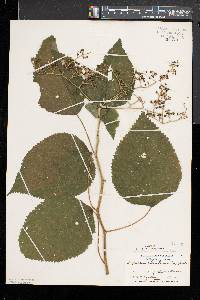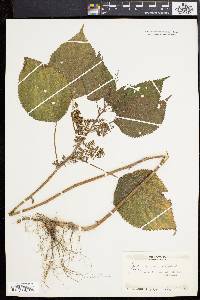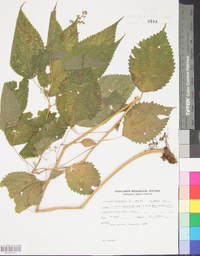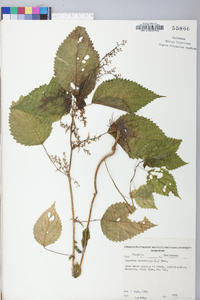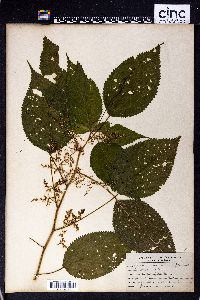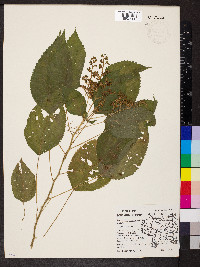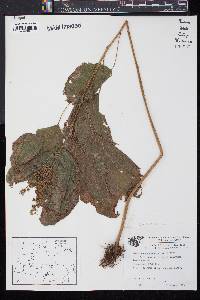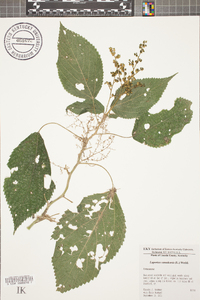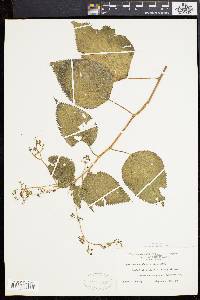Laportea canadensis
|
|
|
|
Family: Urticaceae
Canadian Wood-Nettle, more...Canada woodnettle, Canada lettuce, Canadian woodnettle
[Urtica pustulata] |
Herbs , annual or perennial, rhizomatous, with tuberous roots, 3-15 dm, sparsely to densely covered with stinging hairs and nonglandular, nonstinging hairs, stipitate-glandular hairs absent. Leaf blades narrowly to broadly ovate, 6-30 × 3-18 cm, base rounded, truncate, or broadly cuneate, not auriculate, margins regularly serrate, apex acuminate. Inflorescences with staminate and pistillate flowers in separate panicles, proximal panicles staminate, distal panicles pistillate. Staminate flowers ca. 1-1.5 mm across; tepals5, equal in length; stamens5, opposite tepals; filaments slightly longer than tepals. Pistillate flowers ca. 0.5 mm; tepals 2-4, appressed, inner pair as long as ovary; ovary compressed, nearly orbicular to crescent-shaped; style persistent, feathery, 2-3 mm or more. Achenes strongly compressed, ± orbicular, ca. 2-3 mm. 2 n =26. Flowering spring-early fall. Rich, moist, deciduous forests, often along seepages and streams; 0-2000 m; St. Pierre and Miquelon; Man., N.B., N.S., Ont., Que., Sask.; Ala., Ark., Conn., Del., D.C., Fla., Ga., Ill., Ind., Iowa, Kans., Ky., La., Maine, Md., Mass., Mich., Minn., Miss., Mo., Nebr., N.H., N.J., N.Y., N.C., N.Dak., Ohio, Okla., Pa., R.I., S.C., S.Dak., Tenn., Vt., Va., W.Va., Wis.; Mexico. Native Americans used Laportea canadensis to treat incontinence and tuberculosis, to counteract poison, as a love medicine, and to facilitate childbirth (D.E. Moerman 1986).
Annual or perennial herb 30 cm - 1.5 m tall Stem: erect and unbranched. Leaves: alternate, stalked, 6 - 30 cm long, 3 - 18 cm wide, narrow to broad egg-shaped with a rounded to squared or broad wedge-shaped base and a pointed tip, toothed, sparsely to densely covered with both stinging and non-stinging hairs. Flowers: either male or female, found on the same plant (monoecious), borne terminal and axillary on branched clusters with male inflorescences lower on the stem than female inflorescences. The male flowers are 1 - 1.5 mm across with 5 tepals and five stamens, while the female flowers are about 0.5 mm across with two to four appressed tepals. Fruit: a circular achene about 2 - 3 mm across. Similar species: Boehmeria cylindrica and Parietaria pensylvanica have flexible, non-stinging hairs on toothed leaves while Pilea fontana and Pilea pumila have opposite, toothed and usually hairless leaves. Urtica dioica also has opposite, toothed leaves, but it has both stinging and non-stinging hairs like Laportea canadensis. Flowering: early July to late September Habitat and ecology: The species is common on shaded floodplains and is also found in rich, moist woods. Occurence in the Chicago region: native Etymology: Laportea is named after Francois L. de Laporte, the Count of Castelnau and ninteenth century entomologist. Canadensis means "from Canada." Author: The Morton Arboretum Fibrous-rooted, often rhizomatous perennial herb, 5-10 dm, often flexuous; lvs alternate, broadly ovate, 8-15 cm, acuminate, coarsely serrate, hairy; staminate fls in cymes from the lower axils, seldom surpassing the petioles; pistillate fls in loose, elongate, spreading, divaricately branched cymes from the upper axils, usually much surpassing the petioles; style 3-4 mm, flat, D-shaped, with reflexed style; 2n=26. Rich, moist woods; N.S. to Man., s. to Ga. and Okla. July, Aug. (Urticastrum divaricatum) Gleason, Henry A. & Cronquist, Arthur J. 1991. Manual of vascular plants of northeastern United States and adjacent Canada. lxxv + 910 pp. ©The New York Botanical Garden. All rights reserved. Used by permission. From Flora of Indiana (1940) by Charles C. Deam This is strictly a woodland nettle and is found more or less frequently in low, wet woods throughout the state except in the hilly counties where it becomes infrequent or rare. …… Indiana Coefficient of Conservatism: C = 2 Wetland Indicator Status: FACW |
|
|
|

